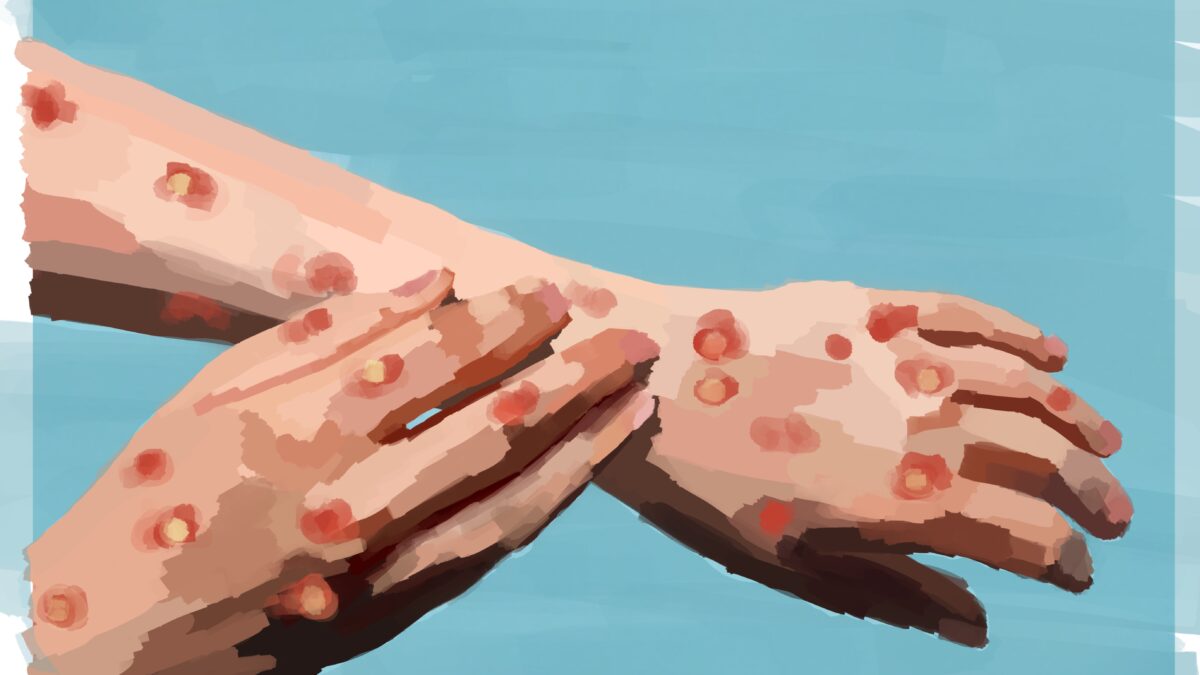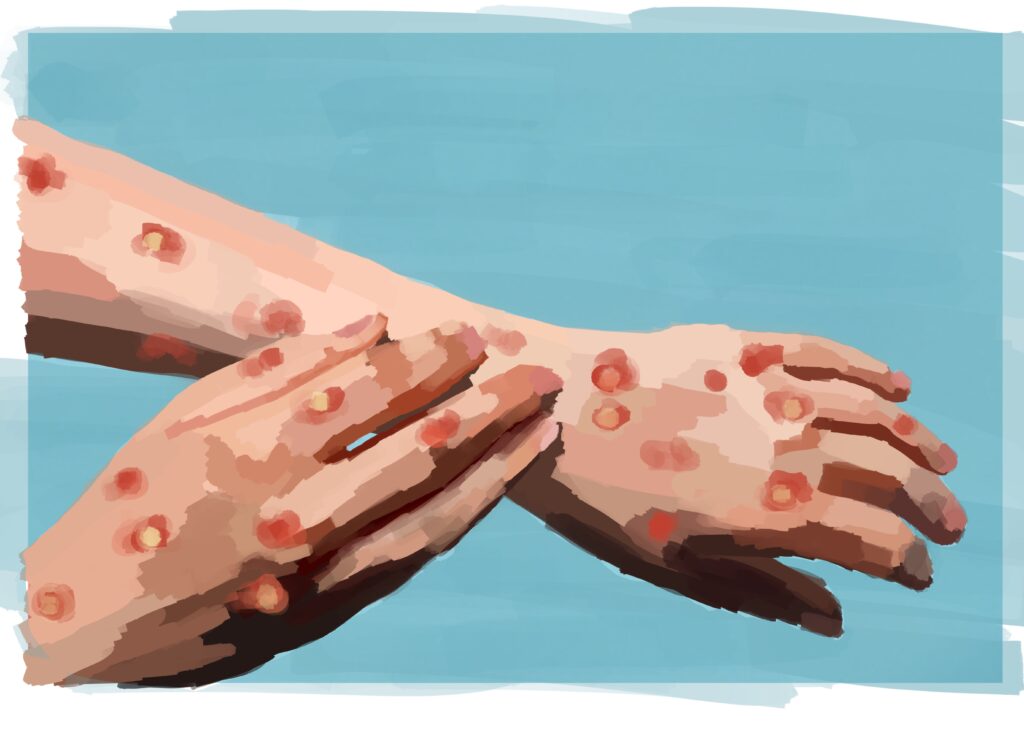Monkeypox virus looms over students heading back to school this fall semester

On Thursday, May 19, 2022, the first case of Monkeypox was detected in the United States. While first discovered in 1958, the first human case was reported in 1970. 52 years later, an outbreak of the virus has taken over the world.
According to the Center for Disease Control (CDC) website, there have been a total of 56,609 cases of the virus reported as of Aug. 22, with 21,894 cases being from the United States as of Sept. 9.
Of those cases, 1,141 of them have been from Illinois. On Aug. 1, Illinois Governor JB Pritzker issued a public health emergency.
Pritzker, declaring Illinois a disaster area, stated in a press release that while rare, Monkeypox still is a serious disease.
“MPV is a rare, but potentially serious disease that requires the full mobilization of all available public health resources to prevent the spread,” said Pritzker. “I am declaring a state of emergency to ensure smooth coordination between state agencies and all levels of government, thereby increasing our ability to prevent and treat the disease quickly.”
Three days later, Marc Molina, assistant vice president for student affairs, sent an email out to the Elmhurst University community stating the plans that the University is putting in place.

Graphic by- Rachel Fratt
“As we prepare for the beginning of the new academic year, the University is committed to the safety and well-being of our campus community,” said Molina in the Aug. 4 email. “The University is closely monitoring the monkeypox virus outbreaks at the state and local levels, and we will notify the campus community of any updates that may affect the campus’ mitigation or response efforts.”
After this email, there have been no further updates from EU as the virus has continued to spread. This left some students fearful of entering back onto campus on Aug. 29 for the first time since May.
“I’m upset by the lack of response to Monkeypox on campus,” said EU senior Ericka Creek. “It replicates their response at the beginning of the COVID.”
The lack of transparency from EU has also raised concerns in senior Stephanie Garcia.
“I wish we knew [more] so we can be aware instead of being in the dark about it so we can at least do something to help control it if need be,” said Garcia.
In an email to The Leader, Molina stated more details about Elmhurst University’s plan in case a student were to contract Monkeypox.
“In the case of a student or employee contracting monkeypox, the University is providing a confidential reporting system and contact tracing in the same way it continues to do for COVID-19,” said Molina.
He continued, “While monkeypox, as a disease, differs significantly from COVID-19, we believe that using a similar reporting protocol is the most effective way to quickly and confidentially connect people to appropriate resources while notifying those who potentially could be exposed.”
Some symptoms of Monkeypox include fever, headache, swollen lymph nodes, and rashes on the face/and or body. While cases have been reported mostly within the LGBTQ+, it is important to note that there should not be a stigma toward this community and that anyone still can contract the virus.
“We have seen this virus disproportionately impact the LGBTQ+ community in its initial spread,” said Pritzker. “Here in Illinois we will ensure our LGBTQ+ community has the resources they need to stay safe while ensuring members are not stigmatized as they access critical health care.”
If a student has any questions about Monkeypox, Molina recommends that the student reaches out to the Wellness Center.
While no cases have been confirmed at EU yet, some students are still fearful of what could come next, and if Monkeypox could impact their lives the same way COVID-19 did.
“I’m not overly concerned but it’s still in the back of my mind,” said Creek.


